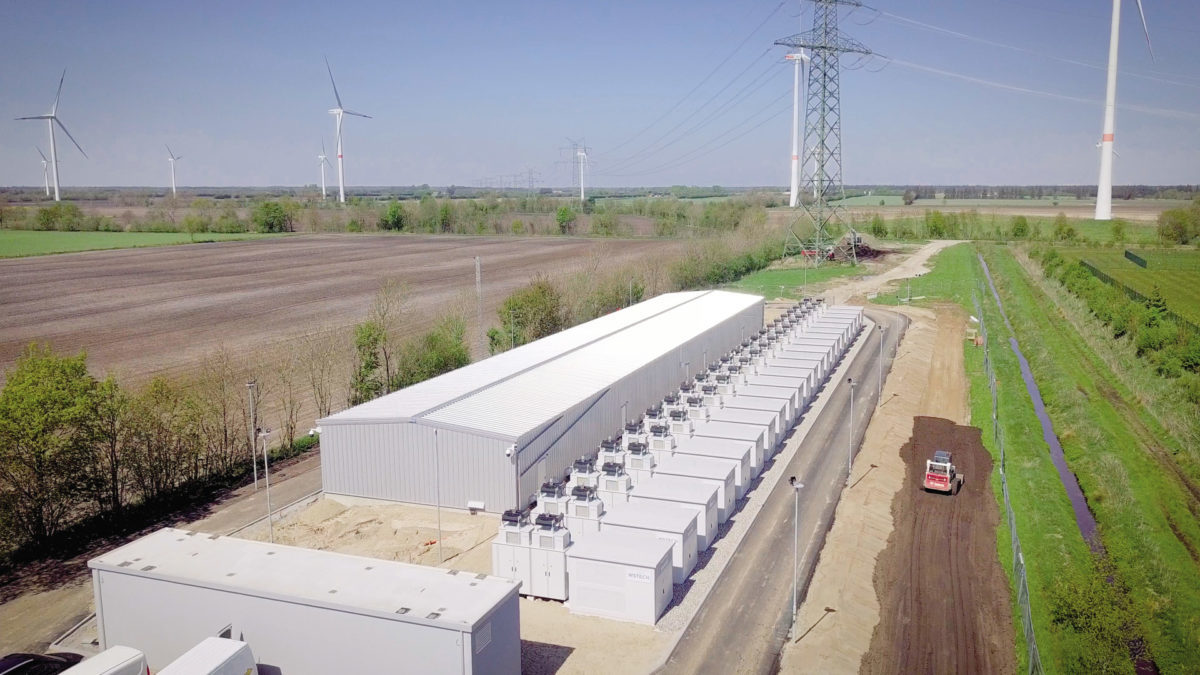From pv magazine International.
Co-location of utility scale solar and storage may accelerate subsidy-free deployment of renewables in the United Kingdom by reducing investment risk, according to a report by U.K. market research company Aurora Energy Research Ltd.
The economics of merchant solar co-located with battery storage systems states the pace and scale of deployment of merchant PV will be determined by investor confidence. According to the study, the co-location of energy storage with such projects would hedge the risk of price cannibalization, which occurs when the mass deployment of merchant solar drives down wholesale power prices so low investor returns are affected.
The phenomenon has only been observed for solar in northern Chile, where a large concentration of PV projects selling power to the spot market depressed wholesale prices in the region which fell to zero in some locations during the peak daily periods of solar production.
Large scale energy storage offers investors different revenue streams from grid balancing services, demand for which will be driven by the ever higher penetration of renewables. “Co-location of new solar assets with battery storage systems can unlock additional revenue streams and reduce the risks of merchant business models,” Aurora Energy wrote. Mass deployment of such assets can be expected to improve the technology used and the associated business models as a further bonus.
In good company
Uniting solar plants and storage will be decisive for the construction of profitable subsidy-free renewable energy in the U.K., claimed the report. “We find project internal rates of return [IRRs] of between 6.6% and 7.6% for hybrid assets deployed in 2020 in our base case market scenario, compared with 4% for standalone solar and battery assets,” the analysts wrote. Co-location of PV and storage can also reduce balance-of-system battery costs by up to half.
The report’s authors said the British regulatory environment is now more favorable for storage projects and if electricity network operator National Grid raises its procurement of flexible capacity – implying higher ancillary service revenue for batteries – more opportunities will be opened to investors. According to the study, the rising penetration of renewables in the U.K. is increasing price volatility as well as the need for flexible assets, including demand-side response, storage and gas peaking.
The latter is a controversial option. Tom Vernon, MD of gas peaking plant provider Statera, recently told pv magazine such fast-acting facilities are vital to back-up a renewables grid. However, German thinktank Energy Watch Group this week stated the destructive effect of methane leakage from natural gas extraction means that fossil fuel is an even more damaging choice than coal or oil.
Aurora Energy’s study predicts installed solar capacity in the U.K. could increase from around 13 GW next year to 19 GW in 2030 and 32 GW in 2040. Wind power generation capacity – on and offshore – could grow from 23 GW to 37 GW and 39 GW over the same period and flexible technologies including storage, pumped hydro, biomass and other niche options are forecast to surge from 9 GW to 22 GW and 29 GW.
Investment returns for merchant PV
Aurora found the internal rate of return for solar projects selling electricity to the spot market is 9-12%. “If everything else is kept equal, reduction of the required IRR by one percentage point, or 10% lower capex [capital expenditure] trajectory could make economic deployment of merchant solar feasible by 2022,” the report’s authors wrote.
Wide deployment of merchant solar facilities from next year to 2040 could drive down solar capture prices to a 14% discount on average baseload prices, increasing the risk of price cannibalization. Hence the need for co-located batteries.
“Investment in assets with advantageous technical characteristics and sophisticated trading strategies would be economic as soon as next year,” the report stated. “We expect that as more of the barriers to co-located solar and storage projects are resolved, investor confidence will increase and deployment of these projects will accelerate.”
This content is protected by copyright and may not be reused. If you want to cooperate with us and would like to reuse some of our content, please contact: editors@pv-magazine.com.









By submitting this form you agree to pv magazine using your data for the purposes of publishing your comment.
Your personal data will only be disclosed or otherwise transmitted to third parties for the purposes of spam filtering or if this is necessary for technical maintenance of the website. Any other transfer to third parties will not take place unless this is justified on the basis of applicable data protection regulations or if pv magazine is legally obliged to do so.
You may revoke this consent at any time with effect for the future, in which case your personal data will be deleted immediately. Otherwise, your data will be deleted if pv magazine has processed your request or the purpose of data storage is fulfilled.
Further information on data privacy can be found in our Data Protection Policy.